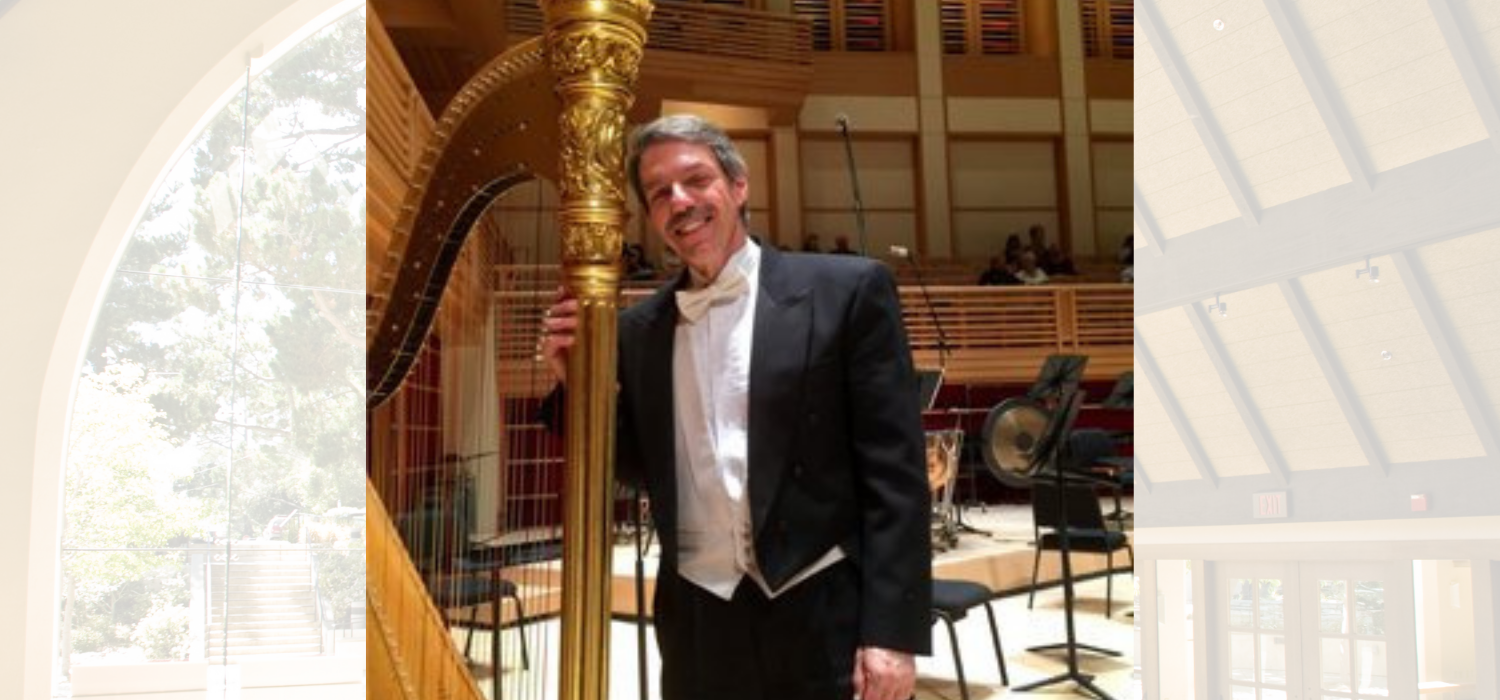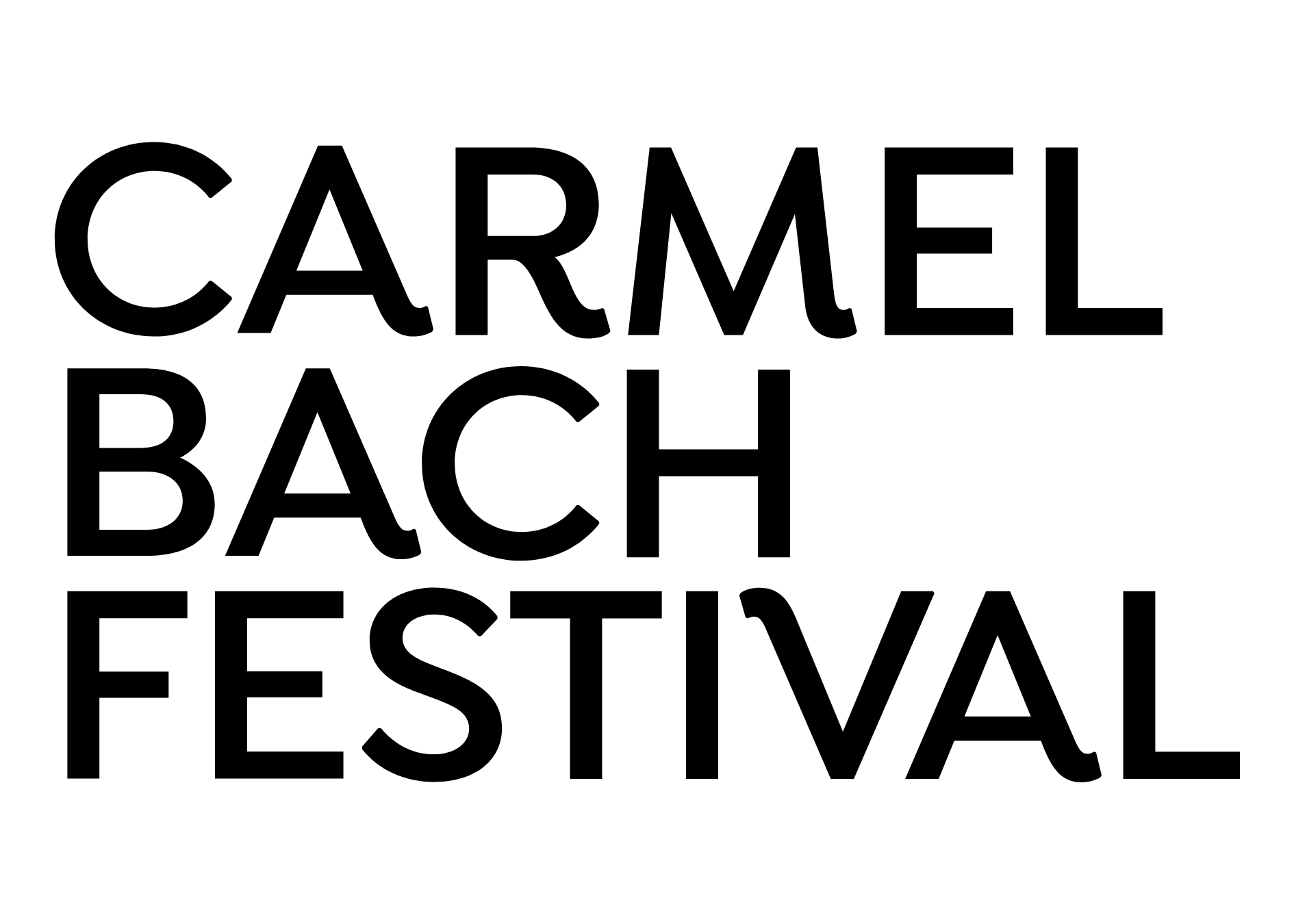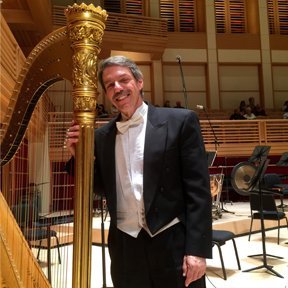
Solo Harp
Mondays, July 18 and 25, 1:30 PM
Dan Levitan, harp
| GEORGE FRIDERIC HANDEL |
Concerto in Bb, Op. 4 |
|
| (1685 –1759) | Andante | |
| Allegro | ||
| GEORGE FRIDERIC HANDEL |
Theme and Variations |
|
|
Andante |
||
| GEORGE FRIDERIC HANDEL/ MARCEL GRANDJANY |
Prelude and Toccata |
|
| (1891–1975) | ||
| MARCEL GRANDJANY |
Rhapsody, Op. 10 |
|
| PAUL HINDEMITH |
Sonata |
|
| (1895–1963) |
Mazig schnell (Moderately Fast) |
|
|
Lebhaft (Quick/Fast) |
||
|
Sehr langsam (Very slow) |
||
| MITCH LANDY |
American Folk Song Suite for Lever Harp |
|
|
Streets of Laredo |
||
|
The Water is Wide |
||
|
Hop High Ladies |
||
|
Simple Gifts |
||
|
Poor Wayfaring Stranger |
||
|
Barbara Allen |
||
|
Green Rocky Road |
||
|
Old Paint |
||
|
Shenandoah |
||
| GABRIEL PIERNÉ |
Impromptu-Caprice, Op. 9 |
|
| (1863–1937) | ||
Program Notes
Handel (1685–1759) was born in Halle (Saale). He was a child prodigy, an organ virtuoso, a composer of operas before reaching adult age. He eventually settled in England, encouraged by a patronage and captivated by the resources of an illustrious position.
During the Baroque, the harp was mechanically limited, scarcely able to modulate from one key to another, but Handel with his exceptional ear for color, recognized its possibilities. Handel’s most famous contribution to harp literature is the Concerto in Bb (the first movement especially), also claimed by other instruments.
Marcel Grandjany paired two of Handel’s unrelated works which became the Prelude and Toccata. Grandjany paired the prelude (played once as composed by Handel, then a second time with Grandjany’s embellishments) with an unrelated allegro in D minor, which he transposed “almost note for note, but not entirely” to C minor to match the key of the prelude.
Grandjany was an American harpist of French birth. Grandjany’s technique/facility was impeccable and he used it to create a beautiful sound. The Rhapsodie makes use of every one of the 47 strings on a grand harp, all 21 positions of the seven pedals (each pedal can be flat, natural, or sharp), as well as the effects such as harmonics, pres de la table (playing close to the sounding board on the harp), and the glissando. The Rhapsodie demonstrated Grandjany’s exalted expression of feeling toward “mater ecclesia” (mother church) in gratitude for the assurance that heaven awaits.
Paul Hindemith (1895–1963) was born in Hanau. As a professor at the Berlin Hochschule, he was one of Germany’s greatest teachers; as a violist, he was a virtuoso. Hindemith was forced to leave Germany to escape political suppression and settled in Switzerland in 1938 and in New York in 1940; six years later he became an American citizen. Hindemith boasted that he could play every instrument for which he had ever written, with the exception of the harp and the organ. The 1939 Harp Sonata must have been a challenge since effects such as arpeggios and glissandi were alien to his temperament. Each movement is precisely structured into three sections and each movement is completely contrasting in mood and tempo.
Mitch Landy was born between 1945 and 1950 in New Jersey. He arranged a suite of nine folk songs, to be performed with only a slight pause between the folk songs. He required that the work be performed on a Merlin Lever Harp which is built by Rick Rubarth. As advertised on his website: “This harp has great dynamic range and plenty of pluck. She’s ready for any touch you deliver. Passionate and expressive.”
Gabriel Pierné (1863–1937) was born in Metz, France. Pierné studied at the Paris Conservatoire and his teachers included Cesar Franck (organ) and Jules Massenet for composition. He succeeded Franck as the organist at Sainte- Clotilde Basilica in Paris and became the chief conductor of Edouard Colonne’s concert series, the Concerts Colonne, in 1910.
The Impromptu-Caprice is idiomatic for the harp; the first section with a beautiful melody accompanied by arpeggios contrasting with the second section with a melody accompanied by hords rather than arpeggios. The introduction, transitions, and coda make use of enharmonics (the same pitch articulated on different
strings) unique to the harp, harmonics, and
the famous glissando.
–Dan Levitan


